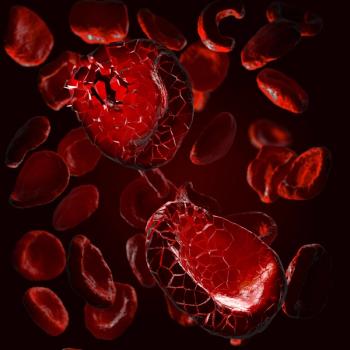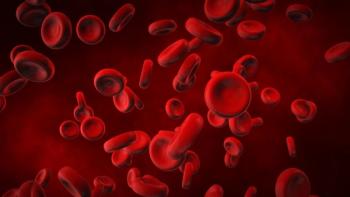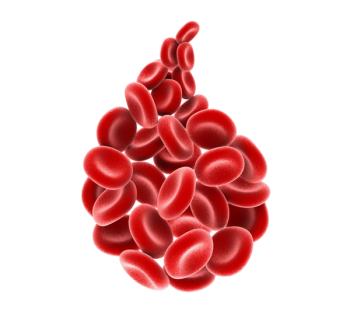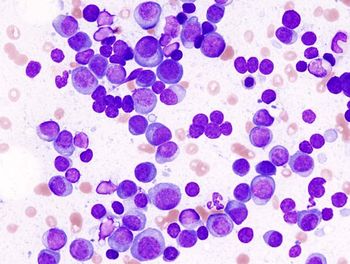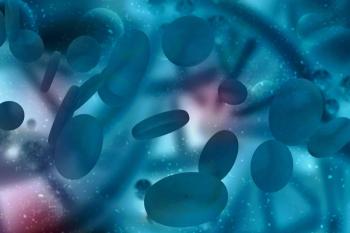
Taking Stock of Immune Effector Cell Therapy Developments in GI Cancers
Raed M. Al-Rajabi, MD, discussed the state of immune effector cell therapy for GI malignancies following a presentation he gave at the 2025 ICE-T Congress.
In a conversation with CancerNetwork®, Raed M. Al-Rajabi, MD, professor of medicine in the Division of Medical Oncology at the University of Kansas Medical Center and lead of the Gastrointestinal (GI) Medical Oncology Group, discussed the state of immune effector cell therapies in GI malignancies following a presentation he gave at the 2025 Immune Cell Effector Therapy Congress.
He began by providing an overview for his presentation before highlighting unmet needs that bispecifics may be able to address when treating patients with GI malignancies. Furthermore, Al-Rajabi discussed the emergence of armored chimeric antigen receptor (CAR) T-cell therapies, which are being assessed to help bolster T-cell penetration into the tumor microenvironment while staving off T-cell exhaustion for constructs already within the microenvironment.
Afterward, Al-Rajabi touched upon effective management strategies for GI-related adverse effects, particularly for “on-target, off-tumor toxicities,” which could be addressed by better defining treatment selection based on a patient’s disease characteristics. Finally, Al-Rajabi discussed the importance of oncology-pathology collaboration to improve treatment specificity for patients and reduce turnaround times for those undergoing lifesaving treatment.
Could you provide a brief overview of what you discussed in your presentation on immune effector cells in GI malignancies?
We had an overview of the adoptive T-cell therapies that are in development in GI malignancies and went over the current drug developments in that space, looking at what we know so far, pros and cons, and what we expect to be seeing in the future.
How do bispecific antibodies and CAR T cells fit into the existing standard of care for GI malignancies? Is there a rationale for moving them into earlier lines of treatment in combination with PD-1 inhibitors or cytotoxic chemotherapy?
There are emerging options for some of our GI malignancies with the use of bispecifics, and I think we are seeing that more in first-line therapies as well. They are [quite] targeted and [used] in specific conditions. Regarding adoptive T-cell therapies like CAR T, we do not see any being utilized at this point in GI malignancies, but it is definitely a hot topic of research, and we see [many] promising options. Hopefully, in the future, that will help patients who are refractory to standard lines of therapy.
We want these drugs, once they are developed, to be combined with current standards of care to improve on the current benefits that we see from some of these agents, especially with checkpoint inhibitors and certain immunotherapies like CAR T. It is a hot topic that we are investigating, and we feel that they work synergistically, so [there is] more to come on that. But currently, [there are] not many approved therapies in GI malignancies regarding CAR T therapies.
What are the most significant unmet needs in advanced GI malignancies that bispecifics are uniquely positioned to address compared with existing chemotherapy options or checkpoint inhibition?
GI malignancies have always [included] the unfortunate group of patients who do not respond well to immunotherapies. We have certain conditions like bile duct cancers or liver cancers that, fortunately, do respond to immunotherapy, and we see a lot of durable responses. But [many] cancers, like colon cancer and pancreatic cancer, just do not have many options, and they are considered what we call cold tumors. They do not have a great response to any of the immunotherapies that [we have].
We want to improve on what we have and hopefully switch some of these cold cancers into cancers that will respond to immunotherapies. Going forward, with the help of bispecific antibodies that target certain driver mutations or surface targets on these cancers, we may be able to utilize the immune system to help our other systemic therapies in improving outcomes in these patients.
Regarding novel strategies, which are proving most effective at enhancing T-cell tumor infiltration as well as reversing T-cell exhaustion in the GI tumor microenvironment?
Right now, we do not have a very good answer [regarding effective strategies for enhancing T-cell infiltration or reversing T-cell exhaustion]. That is one of the biggest hurdles in treating solid tumors with adoptive cellular therapy. These cancers have a significant amount of heterogeneity. Some of them produce certain markers that we can target, [and] some of them do not.
One of the biggest hurdles is the tumor microenvironment. There is a lot of interaction between the tumor microenvironment, whether it's cytokines, megakaryocytes, or other full battery cells that inhibit the tumor response. One of the promising concepts that we are trying to work on [to fix] these hurdles is armored CAR T cells, where they are protected from an immunosuppressive tumor environment. These armored CAR T cells can also produce cytokines that can help the T cells proliferate and prevent exhaustion in the tumor environment. The way we genetically engineer these T cells will hopefully help them linger and work longer.
Unlike hematological malignancies, we are also requiring more than 1 infusion in solid tumors, and that hopefully will also help replenish the constructs in the patient’s systemic circulation to help infiltrate more of the cancer in the tumor microenvironment. There are [many] smart people working on this. There are many mechanisms we can improve on in the microenvironment.
How do toxicities typically present in a GI cancer population when treating with these agents, particularly when you factor in common comorbidities?
As we are trying to improve the effect of these treatments on cancers, we are also realizing one big aspect of these treatments includes on-target, off-tumor toxicities. Patients [in whom] we target claudin 18.2 have significant GI toxicities—including nausea, vomiting, and diarrhea—because these receptors that we are targeting can be apparent on normal tissue. A lot of the colon cancer trials are also showing similar effects with colitis and sometimes even pneumonitis [as well as] skin toxicities.
These patients [often] have significant comorbidities. Some of them have liver damage and cirrhosis. Some of them are severely malnourished, as the GI tract is critical in that aspect. These treatments are not easy to tolerate, especially with things like conditioning regimens, hospitalizations, CRS [cytokine release syndrome], and neurological toxicities that could affect these patients. We need to better define which patients are going to be the best candidates for these treatments, when to pull the trigger on sequencing these therapies, [and determine] the different treatment options we have for a GI malignancy. It is an ongoing discussion, but there are [many] aspects that we must take into consideration when choosing patients for these treatments.
How important is the integration of advanced diagnostic assays for tumor-associated antigen expression into the routine pathology workflow, and how does a collaboration with pathology support the adoption of these agents?
A critical, important aspect of any patient care is the integration of these advanced diagnostics to personalized therapies, and I think we are going to get more specific on which patients require which therapies going forward. Having a strong collaboration with our pathology colleagues is crucial for that success. We must develop systems that reflex test the tissue so it is available and ready in the fastest turnaround time [and that] these patients do not have to wait for lifesaving or critical therapies for their cancer.
We see more of that becoming apparent with each FDA approval that requires a specific target. Instating those workflows is sometimes a little difficult; I know it's hard in academic institutions, but it's even harder in community oncology, where the majority of our patients are being treated. This has to be a critical aspect of any patient's cancer care: getting the tumor-associated antigens or mutations addressed as soon as tissue or liquid biopsies are acquired so we could start the process of finding a good treatment.
Reference
Al-Rajabi RM. IEC in GI malignancies. Presented at: 2025 Immune Cell Effector Therapy Congress; September 27-28, 2025; Kansas City, KS.
Newsletter
Stay up to date on recent advances in the multidisciplinary approach to cancer.


